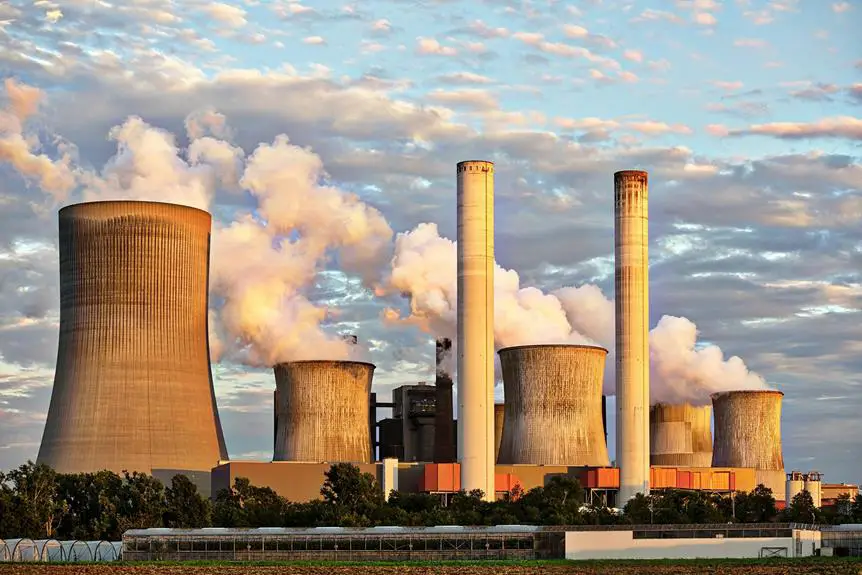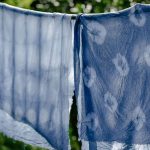When you consider the fabric choices in your life, sateen might not be the first to raise environmental concerns, but it certainly should. The staggering amount of water and chemicals required for production not only strains local resources but also poses serious risks to ecosystems. You may find it surprising that the carbon footprint associated with sateen production contributes significantly to climate change. As you explore the implications of this fabric on the environment, you might wonder what sustainable alternatives exist and whether your choices can make a difference.
Table of Contents
Overview of Sateen Production
Sateen production involves weaving cotton fibers in a way that creates a soft, lustrous fabric, making it popular for bedding and home textiles. The process typically begins with high-quality cotton, which is spun into yarn. This yarn is then woven using a unique technique that places more threads on the surface, resulting in that silky finish you love.
During production, the fibers are dyed to achieve vibrant colors, enhancing the fabric's aesthetic appeal. You might appreciate how sateen drapes beautifully, offering an elegant look in your bedroom or living space. The weaving method also contributes to the fabric's durability, allowing it to withstand regular use while maintaining its charm.
Manufacturers often source cotton from various regions, impacting the overall quality and sustainability of the fabric. Once woven, sateen undergoes finishing processes that can include treatments for softness and stain resistance, making it an even more desirable choice for home textiles.
While you enjoy the smooth texture and luxurious feel of sateen, it's essential to recognize the complexities of its production, as these can influence both the fabric's quality and its environmental impact.
Water Consumption Concerns
When you look at the production of sateen, you'll notice that water consumption is a major concern.
It's crucial to consider how much water is used in the manufacturing process and the potential effects on local ecosystems.
Water Usage Statistics
The production of sateen consumes significant amounts of water, raising concerns about sustainability in the textile industry.
On average, it takes around 10,000 to 15,000 liters of water to produce just one kilogram of sateen fabric. This staggering figure highlights the immense pressure that textile manufacturing places on local water resources.
When you consider that millions of kilograms of sateen are produced annually, the cumulative water usage becomes alarming. This high demand not only depletes freshwater sources but also contributes to pollution, as wastewater from textile production often contaminates nearby rivers and lakes.
Moreover, in regions where water is already scarce, the textile industry's water consumption can exacerbate existing issues, affecting both local communities and ecosystems.
As you look deeper into the statistics, it's clear that the water footprint of sateen production is a pressing concern that can't be ignored.
The effects ripple beyond just the immediate area of production, impacting food security and local livelihoods. Understanding these water usage statistics is crucial as you consider the broader implications of your textile choices.
Sustainable Sateen Practices
Adopting sustainable practices in sateen production can significantly reduce water consumption and lessen the environmental impact of the textile industry.
You can start by choosing organic cotton, which typically requires less water than conventional cotton. This choice not only conserves water but also minimizes harmful pesticide usage.
Next, consider implementing water-efficient dyeing techniques. Traditional dyeing methods often consume vast amounts of water, but newer technologies, like digital printing, use significantly less. By opting for these innovative methods, you'll help decrease overall water usage in the production process.
Another effective strategy is to recycle and treat wastewater. By reusing water in your manufacturing processes and treating it for future use, you can drastically cut down on fresh water consumption. Encouraging suppliers to adopt these practices can help create a more sustainable supply chain.
Impact on Local Ecosystems
How does excessive water consumption in sateen production impact local ecosystems? When manufacturers use vast amounts of water for farming cotton and processing sateen, they often deplete local water sources. This leads to diminished water availability for nearby communities and wildlife. You may notice that rivers and lakes shrink, affecting the flora and fauna reliant on these habitats. Additionally, the over-extraction of groundwater can result in land degradation, threatening agricultural productivity.
Here's a table illustrating the potential impacts of excessive water consumption in sateen production:
| Impact | Description |
|---|---|
| Water Scarcity | Reduced availability for local communities |
| Habitat Loss | Disruption to aquatic ecosystems |
| Soil Degradation | Decline in soil health due to over-extraction |
| Biodiversity Decline | Threatened species due to habitat changes |
| Increased Competition | Strain on remaining water sources among users |
Chemical Usage and Pollution
When you consider sateen production, it's crucial to look at the toxic chemicals used in the process.
These substances often lead to serious water pollution and can significantly impact air quality as well.
Understanding these effects can help you make more informed choices about the products you support.
Toxic Chemicals Employed
Sateen production often involves toxic chemicals that not only affect the fabric's quality but also contribute to significant environmental pollution. When you think about the manufacturing process, you mightn't realize that substances like formaldehyde, heavy metals, and various solvents are frequently used. These chemicals serve multiple purposes, from enhancing the fabric's finish to preventing wrinkles, but they come with serious risks.
As you engage with the world of textiles, it's essential to recognize that these toxic substances can leach into the environment during production and disposal. If you're concerned about sustainability, consider that many of these chemicals don't break down easily, persisting in the ecosystem and posing health risks to both humans and wildlife.
Moreover, the workers involved in the production process may also face direct exposure to these harmful substances, leading to adverse health effects.
When choosing sateen products, think about the long-term implications of toxic chemical use and its ripple effects on the environment. You have the power to make informed choices that prioritize healthier alternatives and support eco-friendly practices in the textile industry.
Water Pollution Concerns
The chemical processes used in sateen production often lead to serious water pollution, as harmful substances can wash off into local waterways during manufacturing. You might not realize that these chemicals can severely impact aquatic ecosystems and local communities. Heavy metals, dyes, and other pollutants may contaminate drinking water sources, affecting both human health and wildlife.
Here's a breakdown of some common chemical pollutants in sateen production:
| Chemical Pollutant | Impact |
|---|---|
| Heavy Metals | Accumulates in fish and soil, posing health risks |
| Dyes | Can disrupt aquatic life, affecting reproduction |
| Pesticides | Harmful to both aquatic and terrestrial organisms |
| Surfactants | Reduces oxygen levels in water, harming fish |
Air Quality Impact
Chemical usage in sateen production significantly deteriorates air quality, releasing volatile organic compounds and other pollutants that can harm both workers and nearby communities. You mightn't realize it, but those chemicals often evaporate into the air during manufacturing processes, creating a toxic environment. This pollution can lead to respiratory issues, headaches, and other health problems for people living in the vicinity.
Furthermore, these VOCs, along with particulate matter, can contribute to smog formation and climate change. As you breathe in this contaminated air, you expose yourself to long-term health risks. The impact doesn't stop there; it also affects local ecosystems, as these pollutants can settle on plants and water sources, causing broader environmental damage.
It's crucial to understand the importance of regulations and best practices in the sateen industry to minimize these harmful emissions. By advocating for cleaner production methods and supporting brands that prioritize sustainability, you can help improve air quality. Every small action counts, and together, we can push for a healthier future for our communities and the environment.
Don't underestimate your role in combating the air quality crisis linked to sateen production.
Carbon Footprint Analysis
Understanding the carbon footprint of sateen production reveals significant environmental implications that can't be overlooked. From the cultivation of cotton to the manufacturing processes, each stage contributes to greenhouse gas emissions.
You mightn't realize that cotton farming often relies on synthetic fertilizers and pesticides, which release carbon dioxide and nitrous oxide into the atmosphere.
Once harvested, the cotton undergoes various processes, like spinning and weaving, which require substantial energy, often sourced from fossil fuels. This energy consumption adds to the carbon footprint.
Additionally, the transportation of raw materials and finished products further compounds emissions, as trucks, ships, and planes burn fossil fuels.
It's essential to consider water usage as well. Water-intensive processes not only deplete vital resources but can lead to increased carbon emissions through energy-intensive water treatment and distribution systems.
Sustainable Alternatives to Sateen
Exploring sustainable alternatives to sateen reveals a variety of eco-friendly fabrics that minimize environmental impact while maintaining quality and comfort.
One great option is organic cotton, which uses fewer pesticides and fertilizers, making it gentler on the planet. By choosing organic cotton, you not only support sustainable farming practices but also enjoy the softness associated with sateen.
Another fantastic alternative is Tencel, made from sustainably sourced wood pulp. This biodegradable fabric requires less water and energy to produce, offering a luxurious feel without the hefty environmental cost.
If you're looking for something with a bit of stretch, consider bamboo fiber. It's naturally antibacterial and grows quickly, making it a renewable choice.
Linen, derived from flax plants, is another excellent option. Its production process involves less water and chemicals compared to cotton, while providing breathability and durability.
Lastly, recycled polyester, made from post-consumer plastic bottles, can also serve as an eco-friendly substitute. It helps reduce waste and keeps plastics out of landfills.
Importance of Responsible Consumption
Choosing sustainable fabrics like organic cotton and Tencel underscores the importance of responsible consumption in minimizing environmental impact. When you opt for these materials, you're not just making a fashion choice; you're taking a stand against harmful practices that contribute to pollution and resource depletion. By selecting products made from eco-friendly fabrics, you help reduce the carbon footprint associated with traditional textile production.
It's crucial to consider the entire lifecycle of a product. Think about where it comes from, how it's made, and what happens when you're done with it. Supporting brands that prioritize ethical practices encourages more companies to adopt sustainable methods. Your purchasing power can drive change in the industry.
Also, remember that less is more. Instead of buying fast fashion items that end up in landfills, invest in quality pieces that last longer. This not only benefits the environment but also saves you money in the long run.
Frequently Asked Questions
What Are the Origins of Sateen Fabric?
Sateen fabric originated in the Middle Ages, specifically in the Mediterranean region. It's made from cotton or silk with a satin weave, giving it a luxurious sheen. You'll find its rich history fascinating and versatile!
Is Sateen Biodegradable or Recyclable?
Sateen isn't biodegradable since it's typically made from cotton or synthetic fibers, which take time to break down. However, you can recycle cotton sateen, depending on local facilities, so check your options for sustainability.
How Does Sateen Compare to Other Fabrics Eco-Wise?
When you compare sateen to other fabrics, you'll find it often requires more resources for production. However, its durability can mean less frequent replacements, balancing its environmental impact against shorter-lived alternatives like cotton or polyester.
What Certifications Should I Look for in Sustainable Sateen?
When you're searching for sustainable sateen, look for certifications like GOTS, OEKO-TEX, and Fair Trade. These labels ensure the fabric meets environmental and social standards, giving you confidence in your eco-friendly choices.
Can Sateen Be Produced Ethically?
Yes, you can produce sateen ethically by sourcing organic cotton, ensuring fair labor practices, and obtaining certifications like GOTS or OEKO-TEX. It's essential to research brands and support those committed to sustainable and ethical production methods.
- How Does Ring Spun Cotton Affect Garment Fit and Shape Retention? - August 13, 2024
- What Are the Challenges in Producing Ring Spun Cotton? - August 13, 2024
- Is Ring Spun Cotton Suitable for Plus-Size Clothing? - August 13, 2024






